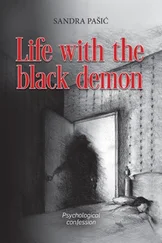I never did find out just why this room had been given such perfunctory treatment. Perhaps because Hitler himself had never set foot in it. In addition, it was rather dark inside, because an open gallery covered by a wooden roof ran all the way along the building. It was a pretty sight, with its columns and brightly coloured flower containers, but it didn’t let a single ray of sunlight into the rooms. Next to the office was the dental surgery. When necessary, Professor Blaschke [32] Hugo Blaschke, b Neustadt 14 November 1881, d Nuremberg 6 December 1959; studies dentistry in Philadelphia and London; 1911 opens a dental practice in Berlin, is Hermann Göring’s dentist; 1931 joins the NSDAP, is Hitler’s dentist from the end of 1933 to 1945; 1946 interned; 1948 released, practises dentistry in Nuremberg until his retirement.
from Berlin practised his trade here with his assistants and a dental nurse. The little room was equipped with the most modern dental tools and equipment, because while he was staying in the mountains Hitler generally took the chance to get his teeth seen to. The barber had a room in this building too, but he had to put up with very makeshift equipment. Finally, there was a fairly large dormitory for the soldiers of the guard, and then came the garden wall with the gate up to the guesthouse. A guard was posted here, and he insisted on seeing your pass whenever you wanted to come in or go out.
A broad paved road passed right at the foot of the Berghof, winding up out of the valley in sinuous curves and going on to the Türken, [33] Traudl Junge means the Zum Türken inn, which is still standing.
the Platterhof, [34] The Platterhof was a restaurant or café with a hairdressing salon attached; its clients included Eva Braun and Traudl Junge. The building was demolished in 2000.
Bormann’s house and the barracks. On the other side of the road a magical landscape extended, its hills softly rolling. No gardener could have created a more beautiful design than Nature herself had done here. Meadows, woods and mountain streams made it into a natural park. Only the well-tended footpaths and a small paved road running through it showed that mankind had any hand in the design. This was the Führer’s ‘exercise run’, as his entourage called the area. Hidden behind trees, and invisible from the Berghof, was a little tea-house that Hitler visited almost daily. […]
In spite of these beauties, which I appreciated so much, I didn’t feel comfortable in the atmosphere of the Berghof. We were treated like guests but we weren’t there of our own free will, we were still employees. Only the men who could bring their families with them, or at least put their wives up in Berchtesgaden or the country around it, were pleased when headquarters moved to this southern part of Germany. But even their happiness wasn’t complete, because although they knew their families were within reach they could very seldom take time off for their private lives. Only those who had set periods of duty and were not indissolubly bound to the Führer’s daily life really enjoyed the Berghof. Everyone else was stuck with Hitler’s irregular, strenuous yet very monotonous daily timetable.
In the morning the building was quiet, as if abandoned. There was a certain amount of life only in the domestic premises and the adjutancy building. Activity really began only at noon. Then cars came roaring up the road, bringing generals and military officers for the conference. The peaceful terrace was full of men in uniform who were dying for a cigar or cigarette and so preferred to stay out in the open air. The aides-de-camp would be waiting in the little winter garden with maps and briefcases, by now the phones were ringing all the time, and only when the Führer appeared did people go back inside the house. The Great Hall with its gigantic windows, a room that really seemed to be meant for peaceful, sociable gatherings and witty conversations, became the scene of violent arguments, sober calculations, and life-and-death decisions.
By now those who had nothing to do with the military briefing and were hoping for lunch were gradually turning up. Dr Dietrich and Lorenz came down from the guesthouse, Drs Morell and Brandt and the second of the Führer’s attendant doctors, Dr von Hasselbach, [35] Hans-Karl von Hasselbach, b Berlin 2 November 1903; studies medicine; 1936 surgical training at Munich University Hospital; 1933 joins the NSDAP; 1934 joins the SS; 1936 attendant doctor to the Führer’s staff as deputy to Dr Brandt; 1942–1944 appointed attendant doctor to Hitler at Führer headquarters; October 1944 dismissed on account of a dispute about Professor Morell, medical director of a field hospital on the Western Front until the end of the war, interned by the US army; 1948 released from internment.
also appeared. After a few days the company was enlivened by the arrival of several ladies. The regular guests included Frau Brandt, Frau von Below the wife of the Luftwaffe adjutant, Frau Schneider, [36] Herta Schneider, née Ostermeier, b Nuremberg 4 April 1913; schoolmate and closest friend of Eva Braun. She met Hitler through Eva Braun in 1933, and was a frequent guest at the Berghof until April 1945.
who was a friend of Eva Braun, and Gretl Braun, Eva’s sister.
During the conference, however, no one could enter the Hall, so you had to hang around outside somewhere or stay in your room until you were summoned. Unfortunately, Hitler himself never seemed to feel hungry, and he sometimes entirely forgot that he had a crowd of guests waiting for lunch, drinking vermouth after vermouth to soothe their rebellious stomachs. So it was sometimes three or four in the afternoon before the last uniformed officers had finally left his side and the last car had driven away again.
Then Hitler came down the few steps from the Great Hall and entered the living room, where a hungry company was assembled. It was usually at this moment that Eva Braun appeared, announced by the yapping of her two black companions. Hitler would go up to her, kiss her hand, and shake hands with everyone he had not already seen at the conference. It was at an occasion of this kind that I first saw Eva Braun and was introduced to her. She was very well dressed and groomed, and I noticed her natural, unaffected manner. She wasn’t at all the kind of ideal German girl you saw on recruiting posters for the BDM or in women’s magazines. Her carefully done hair was bleached, and her pretty face was made up◦– quite heavily but in very good taste. Eva Braun wasn’t tall but she had a very pretty figure and a distinguished appearance. She knew just how to dress in a style that suited her, and never looked as if she had overdone it◦– she always seemed appropriately and tastefully dressed, although she wore valuable jewellery.
When I first saw her she was wearing a Nile-green dress of heavy woollen fabric. Its top fitted closely, and it had a bell-shaped skirt with a broad leopardskin edging at the hem. The pretty way she walked made the skirt swing gracefully. The dress had close-fitting sleeves, with two gold-coloured clips at its sweetheart neckline◦– I don’t know if they were real gold. She was addressed as ‘gnadiges Fräulein’, and the ladies called her Fräulein Braun. Frau Brandt and Frau von Below seemed to be very friendly with her, and she immediately began a very feminine, natural conversation with them about their children, the latest fashions, dogs and anecdotes of personal experiences.
Frau Schneider, whom Eva called Herta, was an old school-friend of hers and almost always in her company in Munich too. It was her two little girls who were so often photographed with Eva Braun that many people thought they were hers.
The waiting time before lunch passed in easy conversation. Hitler talked to Eva, teased her about her dogs, which he said were nothing but a couple of dusting brushes, whereupon she replied that Blondi wasn’t a dog at all but a calf. I was surprised to find that the man who had just come from a military briefing had left all his serious, official thoughts behind the heavy curtain that separated the Great Hall from the living room. His expression was that of any ordinary genial host welcoming company to his country house.
Читать дальше
![Traudl Junge Hitler's Last Secretary: A Firsthand Account of Life with Hitler [aka Until the Final Hour] обложка книги](/books/416681/traudl-junge-hitler-s-last-secretary-a-firsthand-cover.webp)



![Джонатан Димблби - Barbarossa - How Hitler Lost the War [calibre]](/books/385421/dzhonatan-dimblbi-barbarossa-how-hitler-lost-the-w-thumb.webp)







